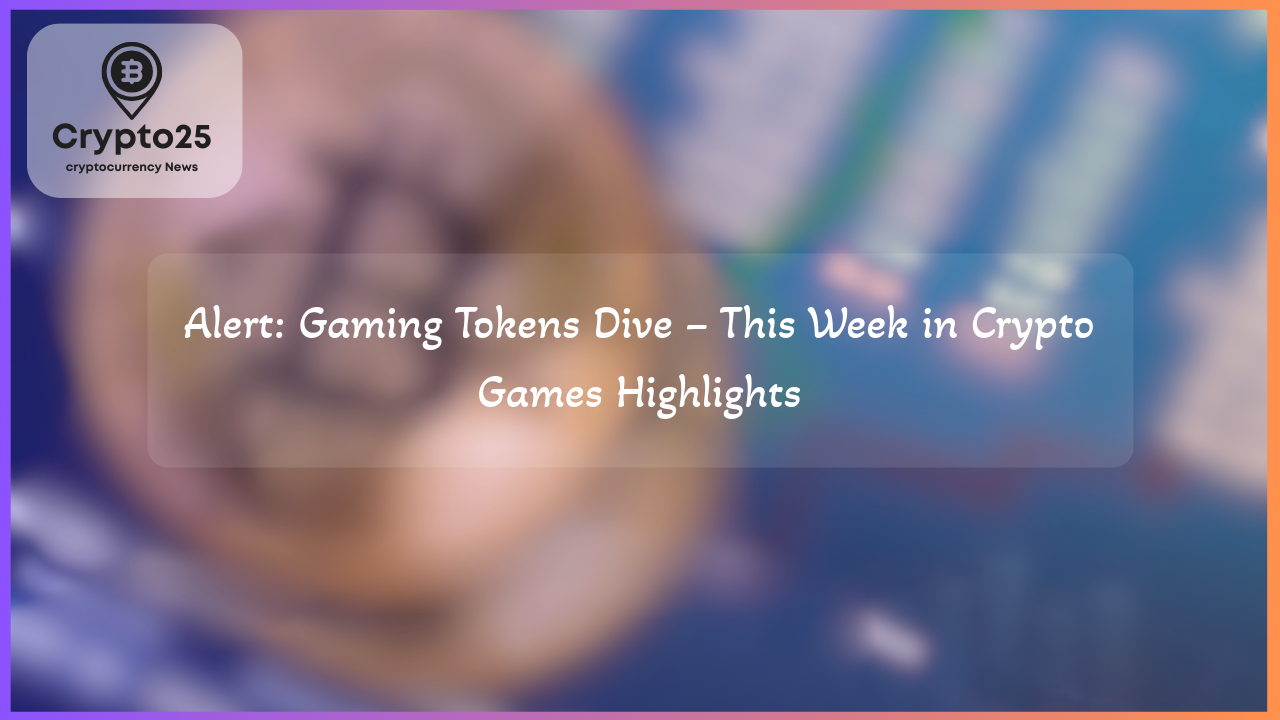
The dynamic world of crypto and NFT gaming continues to evolve rapidly, showcasing groundbreaking developments, platform migrations, and major announcements that keep enthusiasts on their toes. This week, let’s dive into the latest transformations in Web3 gaming, gaming token trends, and what lies on the horizon for the blockchain-based gaming industry.
## The Decline of Gaming Tokens: What Went Wrong?
Over the past few months, gaming tokens have experienced a significant downturn in value, raising questions about the long-term viability of token-driven gaming ecosystems. As per CoinGecko’s market data, gaming tokens have vanished from the top 100 cryptocurrencies by market cap. Immutable (IMX), once the last remaining gaming token on the leaderboard, dropped out of the rankings last week, marking a stark contrast to last year when tokens like The Sandbox (SAND) and Gala (GALA) thrived.
Experts point to broader crypto market fluctuations and waning investor interest in speculative gaming assets as key contributors to this decline. Despite continued innovation within the crypto gaming sector, poor tokenomics and insufficient user engagement have exacerbated these challenges. While blockchain-powered games continue to pioneer new gameplay models, the question remains: Can gaming tokens regain their prominence, or is the industry in need of a different approach?
| Title | Details |
|---|---|
| Market Cap | $1.2 Trillion |
## Ethereum-Based Gaming Gains Traction With New Launches
While the token market may struggle, the development of blockchain games continues to push boundaries. CCP Games, the creator of the legendary MMO Eve Online, recently launched a free trial for “Eve Frontier,” an Ethereum-based multiplayer space survival game. Built on the Redstone Ethereum Layer-2 network, the game integrates blockchain infrastructure while offering players a glimpse of its expansive universe. This unique 10-day trial period coincided with the rollout of new features, emphasizing the growth of blockchain adoption in traditional genres like sci-fi gaming.
“Eve Frontier” represents a promising case study in how blockchain integration can redefine player-driven economies. CCP Games’ $40 million funding round in 2023 underscored their commitment to developing a player-driven marketplace using tokens native to the platform. As the game moves forward, its financial systems, driven by blockchain technology, may inspire competitors to explore decentralized frameworks.
## Immutable’s Strategic Network Consolidation Signals Advancement
Immutable, a leading Ethereum gaming platform, is making waves with its upcoming consolidation of Immutable X into Immutable zkEVM, its zk-rollup Layer-2 blockchain. The transition, planned for late 2025, aims to streamline the gaming ecosystem, enabling faster transactions and a robust infrastructure. Since launching, the Immutable zkEVM network has processed over 150 million transactions, further establishing itself as a pivotal player in blockchain gaming.
For game developers, this merger brings both challenges and opportunities. While migrating assets will be seamless for users, developers will need to address significant API and infrastructure shifts. Titles like “Guild of Guardians” have already successfully transitioned to zkEVM, reinforcing Immutable’s vision of creating a unified ecosystem where games like “Gods Unchained” and “Illuvium” flourish.
The move underscores an important trend in blockchain gaming: the need for scalability and efficiency. By reducing transaction costs and increasing throughput, networks like zkEVM pave the path for more accessible and sustainable gaming experiences.
## Exciting Developments Across Web3 Gaming Platforms
Beyond headline-grabbing news, the Web3 gaming space continues to be a hub of innovation. Projects like “Realms of Alurya” have announced significant platform migrations to Ronin Network, setting the stage for enhanced gameplay and community engagement. Similarly, the blockchain-powered mobile game “Heroes of Mavia” unveiled a detailed roadmap for 2025, featuring the launch of a marketplace and updates to reward systems.
Additionally, Ethereum-powered projects are reshuffling strategies to stay ahead in a competitive landscape. For instance, Aavegotchi recently broke away from Polygon, choosing Base, Coinbase’s Layer-2 network, as its new foundation. Meanwhile, seasoned games like “Skyweaver,” under the rebranded Sequence infrastructure, and new launches like Solana-based meme coins, offer curious glimpses into emerging trends in blockchain-based entertainment.
Each of these developments reflects a key truth about blockchain gaming: adaptability and innovation are essential for maintaining relevance in a fast-moving sector. Whether it’s platform migrations, gameplay expansion, or token optimizations, developers are finding new ways to elevate user experiences while integrating blockchain’s transformative potential.
The world of Web3 gaming continues to thrive, offering players, developers, and investors unprecedented opportunities to engage with gaming economies. As blockchain integration deepens and challenges like token instability are addressed, one thing remains clear: crypto gaming is continuously evolving, and the next wave of developments may redefine what’s possible for gamers worldwide.
